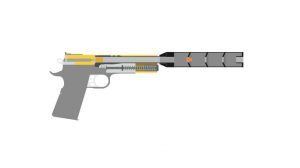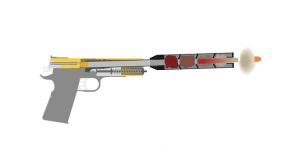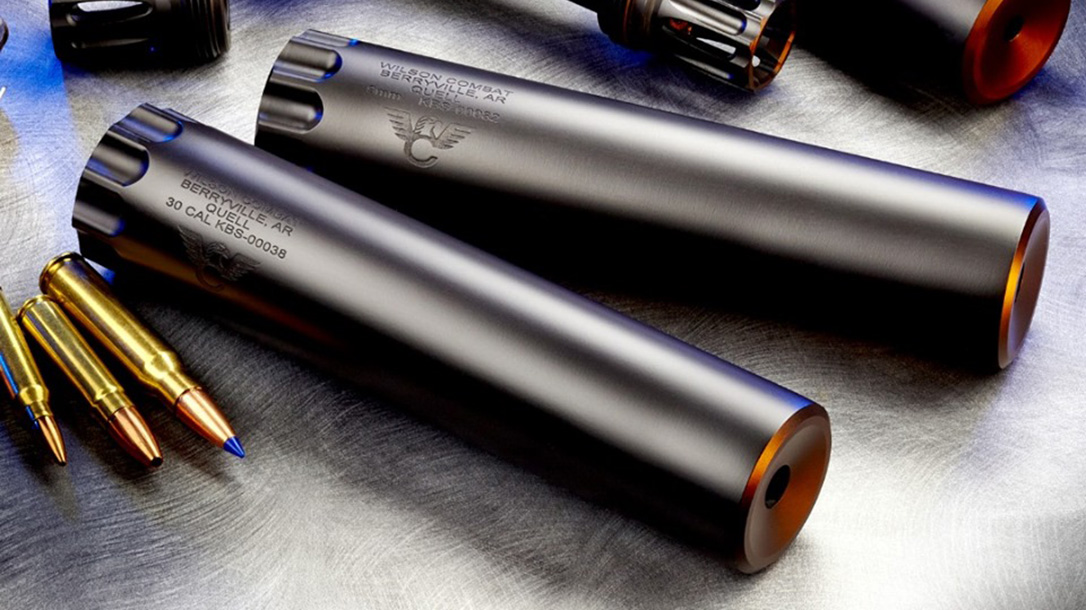One of the most unpleasant things about shooting is the deafening sound that accompanies each shot fired. A combination of expanding gasses and changes in air pressure and air temperature culminate in a noise that can be louder than a jumbo jet taking off. Let that soak in for a second. That’s a sound that’s louder than a widebody on take-off, just inches away from your ears with every shot. Because I value my hearing, I enlist the use of firearm suppressors. Gunshots, which can range between 140 to 175 decibels, can rupture the eardrum or damage the bones in the middle ear. This causes noise-induced hearing loss (NIHL) that can be immediate and permanent even after a single shot. So what can we do about it?
How Loud Is Too Loud?
First, it’s important to understand how NIHL pertains to shooting. NIHL can be caused by even a one-time exposure to a sharp “impulse” sound, such as a gunshot, let alone multiple exposures like you’d get at a shooting range.
Advertisement — Continue Reading Below
Sounds of less than 75 decibels, like those from a vacuum cleaner, are unlikely to cause hearing loss while long or repeated exposure to sounds at or above 85 decibels (think gas lawn mower) are known to cause hearing loss. The louder the sound, the shorter the amount of time it takes for hearing damage to occur.
Ear protection such as plugs or muffs, or, even better, electronic muffs, are standard issue nowadays. I never go to the range without a good set of electronic ear protection. Thankfully, firearm suppressors allow an alternative to having your ears plugged or covered.
Shooting with sound suppressors can be a liberating experience. With the right combination of gun, suppressor, and ammo, you can shoot without wearing ear protection at safe hearing levels. A firearm suppressor is essentially a muffler for your gun. It greatly reduces the level of noise coming from your gun. It also reduces recoil and muzzle flash as well, increasing accuracy and overall shooting enjoyment.
Advertisement — Continue Reading Below
It’s worth mentioning that not all suppressed guns are hearing-safe. Consult with a knowledgeable source such as a suppressor manufacturer or your local dealer before shooting without any hearing protection.
Let’s examine how a sound suppressor works.
How Do Firearm Suppressors Attach?
Suppressors attach to guns in a few ways. Some suppressors are threaded directly onto the gun by way of a threaded barrel. Just screw it on and you’re good to go.
Advertisement — Continue Reading Below
Other suppressors require a quick-detach device such as a specially designed flash hider, muzzle brake, or piston that can interface with it. These usually twist on and off with a secured locking ring of some sort. The image shows this method with an AAC suppressor and flash hider. Lastly, there are some guns that actually have a suppressor built into them, making them integrally suppressed.
How Suppressors Work
Let’s demonstrate how a suppressed gun works, it’s actually quite simple. Its overall operation is pretty much the same as an unsuppressed gun. What it does with the resulting gasses during and after the process of a cartridge being fired is what makes the difference in noise reduction.

Advertisement — Continue Reading Below
-When a gun is discharged, gunpowder ignites and produces hot gases that are pressurized within the confines of the gun.

-Once a bullet leaves the gun’s barrel, it passes through the suppressor.
Advertisement — Continue Reading Below
-Next, the hot, pressurized gases follow the bullet and expand through the length of the suppressor.
-The suppressor’s internal baffles and expansion chambers permit the gases to expand, depressurize and cool down.
-The now less-pressurized and cooled gases escape the suppressor, which results in less noise being emitted.
Advertisement — Continue Reading Below
“Suppressor” or “Silencer”?
Thanks to Hollywood, the term “silencer” seems to reign supreme over “suppressor”. “Suppressor” is the more appropriate term (albeit less widely used) because nothing, and I mean nothing, can completely wipe out the sound of a firearm being discharged. Do yourself a favor and strike “silencer” from your vocabulary in this regard as you’ll just look like a gun newbie.
























